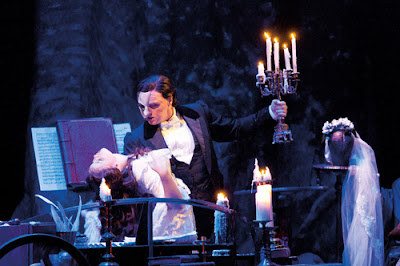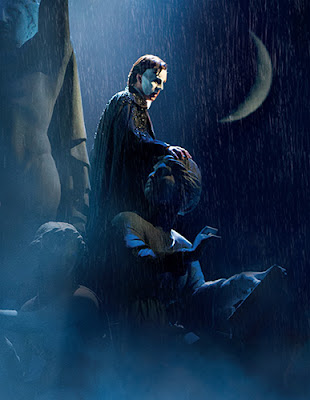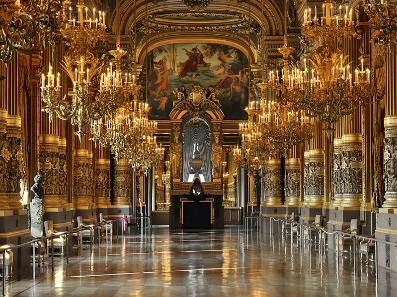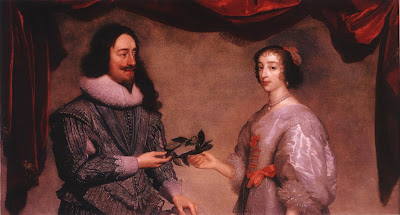As I mentioned in my review yesterday, G.J Meyer has presented some very interesting arguments over the paternity of Cesare, Lucrezia and Juan Borgia. It has long been accepted that Rodrigo Borgia, Pope Alexander VI, was their father and legitimised them after he became Pope. However, it seems that logic says something different - although over 500 years later it's not possible to prove it beyond doubt. In his book, Meyer looks at various source materials that point to the possibility that actually Rodrigo couldn't have been their father. Today, I'm going to very briefly summarise Meyer's findings (I won't go into too much detail, you'll have to buy the book when it comes out in April to find out more!) in bullet point format, and I shall leave it to you to form your own opinions on the matter.
- How did Rodrigo maintain a relationship with Vanozza Cattanei and maintain such a large family without anyone taking much notice, even in gossipy chronicles of the time?
- All of Vanozza's children were born in Spain, while Rodrigo was in Italy - they were also incredibly likely to have been conceived in Spain too. How could Rodrigo flit so easily between the two countries when travel took so long?
- There is no concrete evidence that at any point before or after his election that he fathered a child or even had a mistress or indeed any brief sexual involvement with anyone except for with Giulia Farnese.
- De Roos, who completed a huge five volume work on the Borgia family is almost completely at odds with everything we know about the Borgia myth - having compiled a ton of documents that go some way to show that Rodrigo wasn't actually the father of the Borgia children. In his first volume he publishes a huge revision of the Borgia family tree!
- Meyer states that the four Borgia children (including Joffre) had the same mother and father, and at least three other older siblings by the same parents. Included in this is Pedro Luis, who inherited massive wealth upon his fathers death (long before Rodrigo became Pope) as well as two other daughters.
- At least 5 of the children, if not all 7, were born in Spain - Meyer mentions that this is likely although more source material is needed. Pedro Luis is never known to have been outside of Spain and there is no record of Cesare being in Spain before 1488 - indeed he says later to the Viceroy of Naples that he and his siblings were Spanish by birth. Burchard also speaks of Cesare as a native of Valencia. Rodrigo Borgia left Spain in around 1455 (around 5 years before the birth of Pedro Luis) and returned just the once, staying between June 1472 and September 1473. That was way too late to impregnate the mother of Isabella and Girolama Borgia, and way too soon to be responsible for Cesare or Juan. And so, how could he be the father of the seven, unless he was constantly flicking backwards and forwards between Spain and Italy? Travel in those days was slow, and to do it at such a frequency isn't quite believable.
- It is much more likely that the father of the children was Rodrigo's nephew - Guillen Ramon Lanzol y de Borja, which makes them Rodrigo's grand-nephew's.nieces.
- When Vanozza was pregnant with Joffre in or around 1481, Guillen died and Vanozza made her way to Rome with her children and came under the protection of Rodrigo. She never lived with Rodrigo but both before and after his reign as Pope she maintained her own household.
- Documents stating that Rodrigo was the father of the children are quite suspect for instance, a bull legitimising a child with the name of Cesare de Boria and Cesare de Borja states that the child is the son of a cardinal and an unmarried woman - neither of the parents are named. If the bull were authentic, it is unlikely that it would have used the Spanish form of the Borgia name. There is also no mention of the bull in the Vatican's records, which is odd as all authentic bulls were entered into a registry before they were sent off. It should also be mentioned that as the second son, Cesare had no need to be legitimised as he stood to inherit nothing.
- While Rodrigo often called the children his "beloved son/daughter", he also called everyone else the same - in letters he referred to reigning monarchs as his "beloved son/daughter", and he called pretty much everyone he had dealings with by the same title. He also refers to Lucrezia as his "beloved daughter in Christ". Such titles mean nothing, especially when the reigning pontiff calls everyone the same thing.
- Vanozza Cattanei is never known to have stepped foot inside the Vatican and none of Rodrigo/Alexander's enemies accuse him of sexual immorality - even Savonarola who hated Pope Alexander ever mentioned such things! Had he been accused of such things, Savonarola would certainly have said something in his famous sermons!
- Rodrigo did not buy the dukedom of Gandia for Pedro Luis - he inherited much lands in Gandia upon the death of Guillen which later became the centre of the duchy. Pedro also lent Rodrigo a substantial sum of money in 1483, rather than being dependant on the Cardinal.
- A Spanish royal brief has the name of Juan Borgia's father omitted. All that can be seen is the words "The late illustrious" - were his father a cardinal, it would have been worded "most reverend". This points to the fact that his father was a layman, rather than a churchman - and the deletion of the name suggests deliberate tampering.
And thus, Meyer comes to the conclusion that Rodrigo Borgia can't have been the father of Cesare, Juan and Lucrezia (And Joffre, but everyone forgets about him). Although a brief overview, I haven't gone into too much detail so as not to spoil the book for you all but rest assured the chapter itself is an eye opener. It has certainly made me question the age old assumption that Rodrigo was indeed the father of the three most famous Borgia children in history. It's my next aim to get hold of a copy of De Roos and study it closely, comparing it to the conclusions made by Meyer. It will certainly be a very interesting thing to look at closer, albeit a lot of work as I would imagine much of the documentation is held within the papal archives.
This could certainly be a very interesting mission indeed....
Further Reading

















